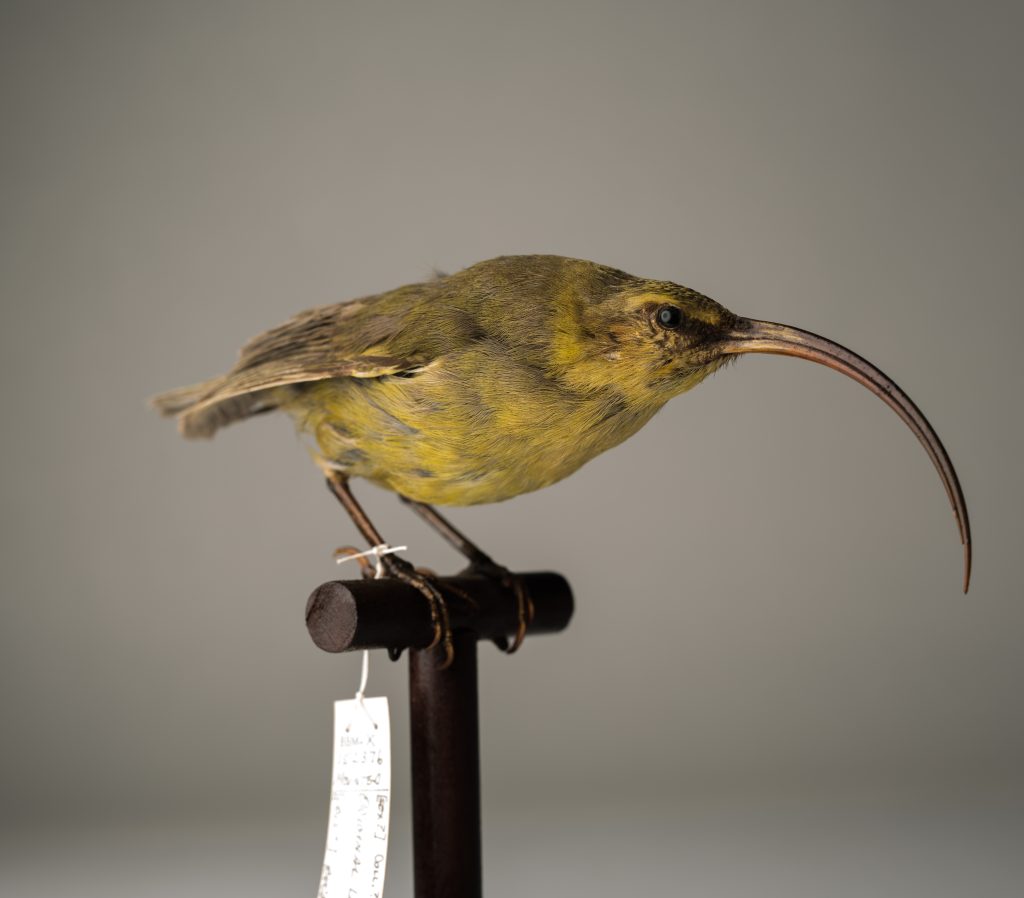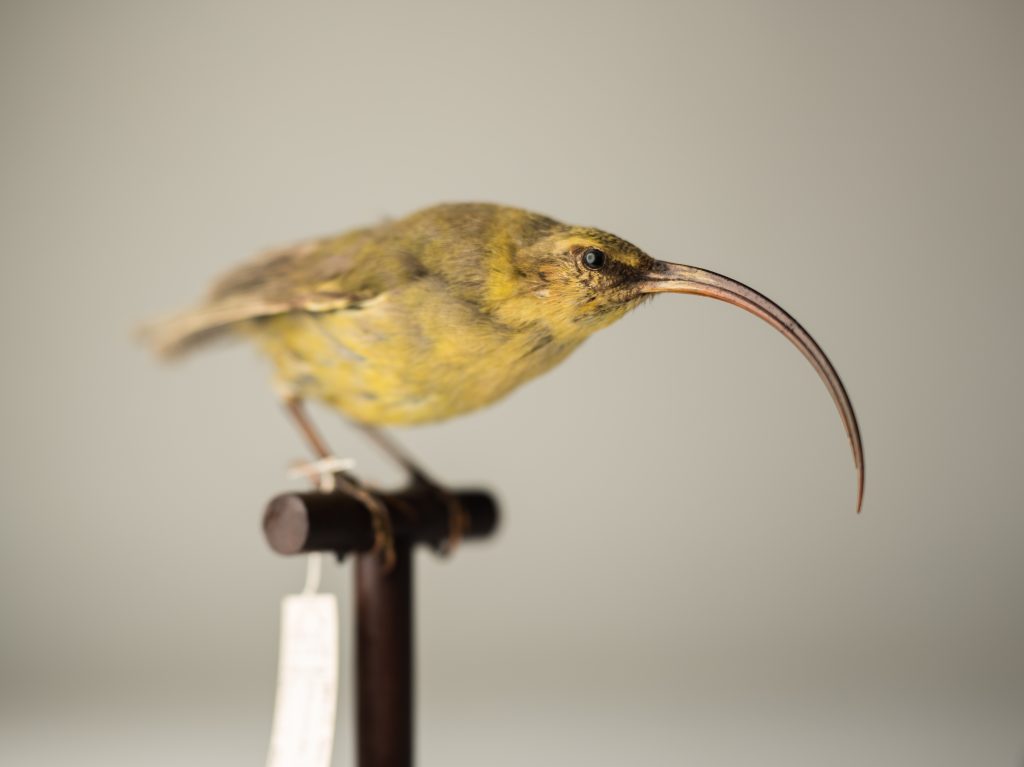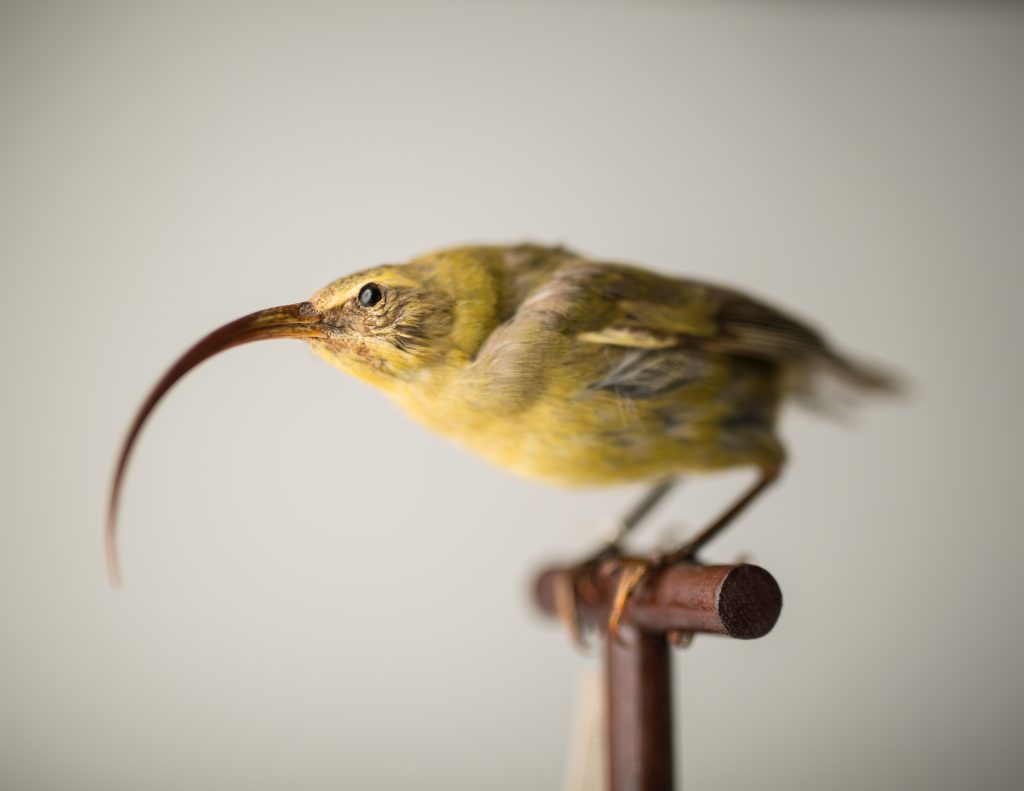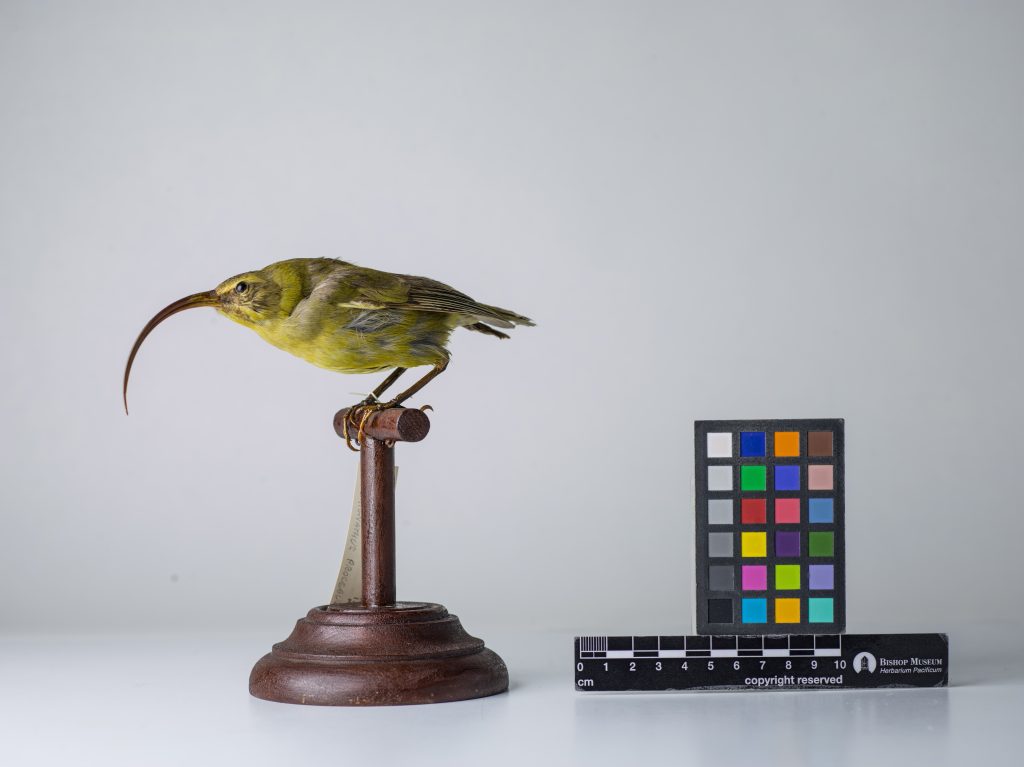Kauaʻi ʻAkialoa
Names
- ʻŌlelo Hawaiʻi: Kaua‘i ‘akialoa
- Scientific: Hemignathus procerus
Conservation Status
- Presumed Extinct
- Federally Listed as Endangered
- State Listed as Endangered
- State Recognized as Endemic
- NatureServe Heritage Rank GX—Presumed Extinct
- IUCN Red List Ranking—Extinct
- Revised Recovery Plan for Hawaiian Forest Birds—USFWS 2006
Species Information
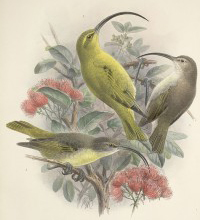
Three Kauaʻi ʻakialoa. Picture: Rothschild Collection
The Kaua‘i ‘akialoa is perhaps the most morphologically specialized of the Hawaiian honeycreepers (Family: Fringillidae) having a decurved bill that is up to half the length of their body. Both sexes are mostly olive-green; males being somewhat brighter, slightly larger, and have a longer bill. The life history of the Kaua‘i ‘akialoa is poorly known and mostly based on observations from the turn of the last century. The species principally hunted for arthropods on the trunks and branches of ‘ōhi‘a (Metrosideros polymorpha) and koa (Acacia koa) trees, and hapu‘u tree ferns (Cibotium spp.) by using its bill to examine bark cervices, decaying wood, epiphytes, and organic matter; observed to insert its entire bill into crevices. Foraging behavior has been described as being similar to that of a woodpecker or creeper. They also took nectar from ‘ōhi‘a and lobelia (Campanulaceae) flowers. Nothing is known about its breeding biology. ‘Akialoa also occurred on the islands of Hawai‘i, O‘ahu, and Lāna‘i. Some scientists consider each island population as a separate species, others lump all into a single, polytypic species. Regardless, none have been observed for at least 60 years.
Distribution
Unknown. Probably extinct. The Kaua‘i ‘akialoa was last seen in the Alaka‘i swamp. Original range likely included all forested regions of Kaua‘i.
Habitat
Unknown. In the late 1800s, the Kaua‘i ‘akialoa occurred in most forests on Kaua‘i from between 200 and 1,500 meters (650 – 4,875 feet) elevation. The species was last observed in the Alaka‘i Wilderness Preserve.
Threats
Causes of the decline of this species are unknown. However, ‘akialoa likely were susceptible to the same factors that threaten other native Hawaiian forest birds, including loss and degradation of habitat, predation by introduced mammals, and disease. For Kaua‘i ‘akialoa populations, the following likely was of particular concern:
- Disease. Avian pox lesions are noted in historic accounts and occur on museum specimens. Perkins (1903) noted Kaua‘i ‘akialoa was “grievously affected by…swelling on the legs and feet, as well as on the head at the base of the bill, and on the skin around the eyes.”
Photos
Additional Resources
For more information and references visit the DLNR State Wildlife Action Plan factsheets. DOFAWʻs species pages and State Wildlife Action Plan fact sheets are provided for general information and are not meant to be a citable, original source of data. If you are a student, researcher, or writer looking for a citable source, please explore the references below or find other original data sources, rather than citing these webpages. The references below were provided by the authors of the State Wildlife Action Plan fact sheets at the time of drafting:
- Foster JT, Tweed EJ, Camp RJ, Woodworth BL, Adler CD, Telfer T. 2004. Long-term population changes of native and introduced birds in the Alaka‘i swamp, Kaua‘i. Conservation Biology 18:716-725.
- IUCN Red List of Threatened Species. 2015. Version 2014.3. Available at: www.iucnredlist.org. (Accessed May 2015).
- Lepson JK, Johnston SM. 2000. Greater ‘akialoa (Hemignathus ellisianus) and lesser ‘akialoa (Hemignathus obscurus). In The Birds of North America, No. 512 (Poole A, Gill F, editors.). Philadelphia, (PA): The Academy of Natural Sciences; and Washington DC: The American Ornithologists’ Union.
- Perkins RC. 1903. Verebrata. Pp. 365-466 In Fauna Hawaiiensis. Volume 1, Part IV (Sharp D, editor). Cambridge, UK: University Press.
- Scott JM, Mountainspring S, Ramsey FL, Kepler CB. 1986. Forest bird communities of the Hawaiian islands: their dynamics, ecology and conservation. Lawrence, (KS): Cooper Ornithological Society.
- U.S. Fish and Wildlife Service. 2006. Revised Recovery plan for Hawaiian forest birds. Portland, (OR): U.S. Fish and Wildlife Service.


